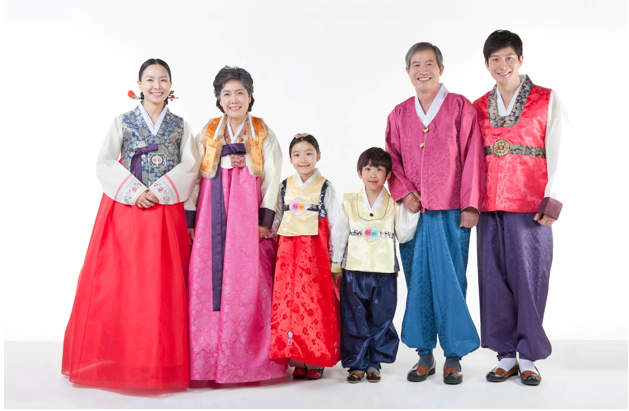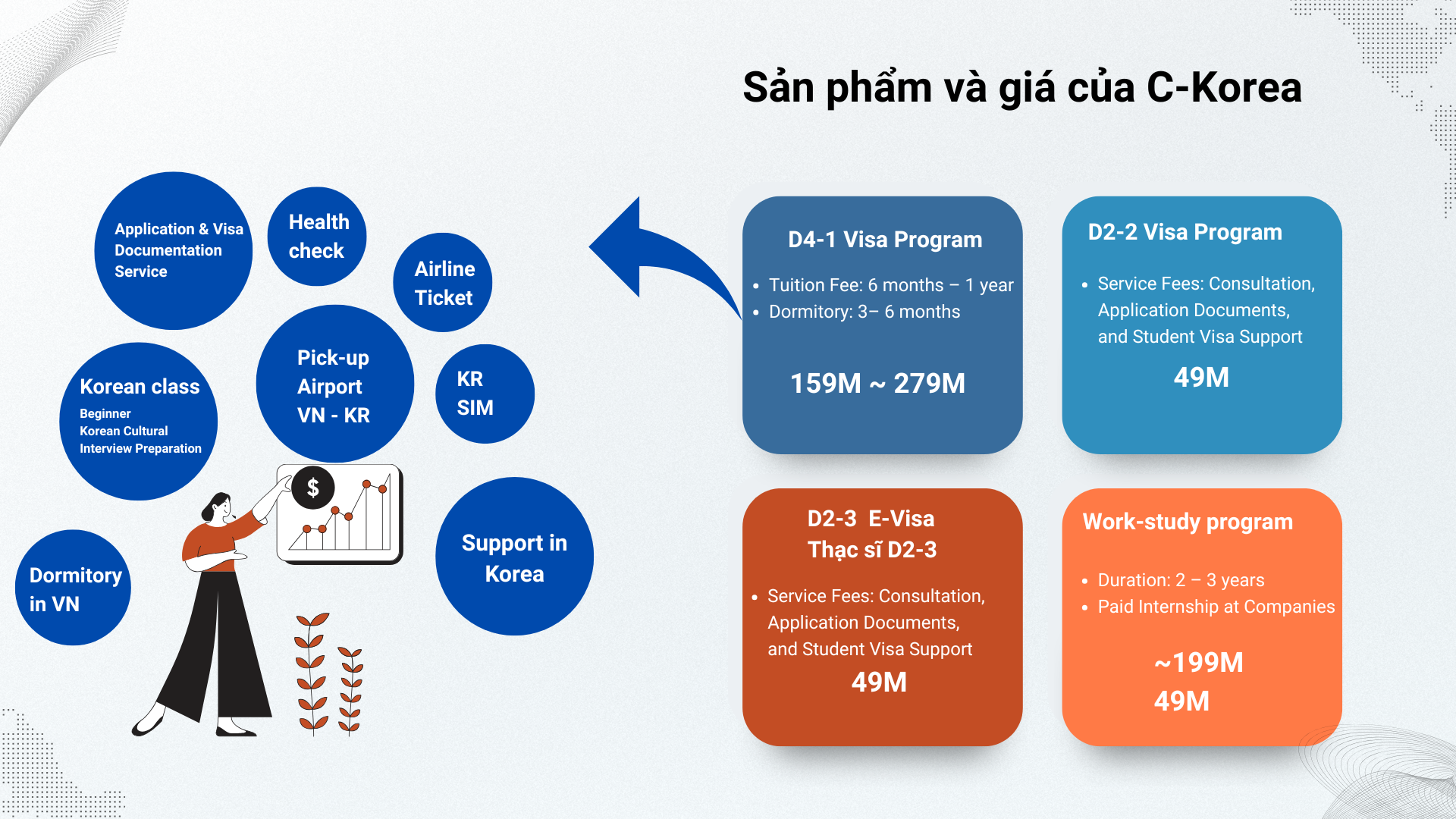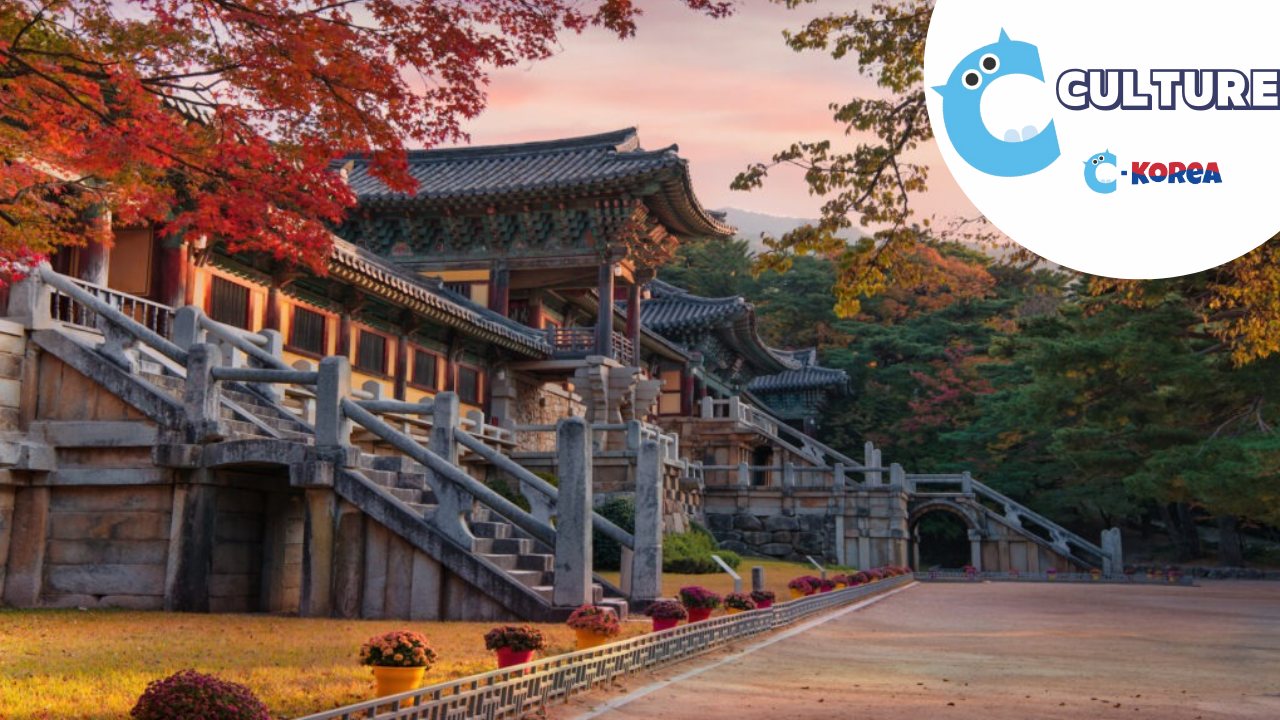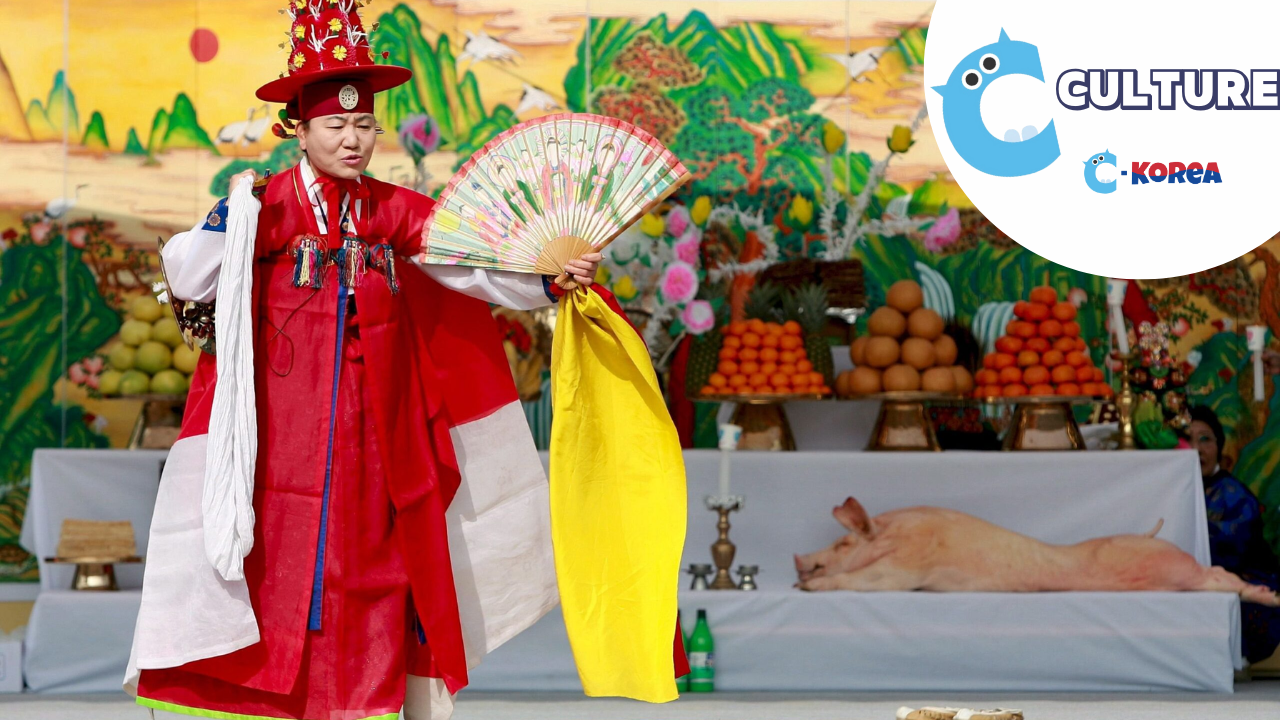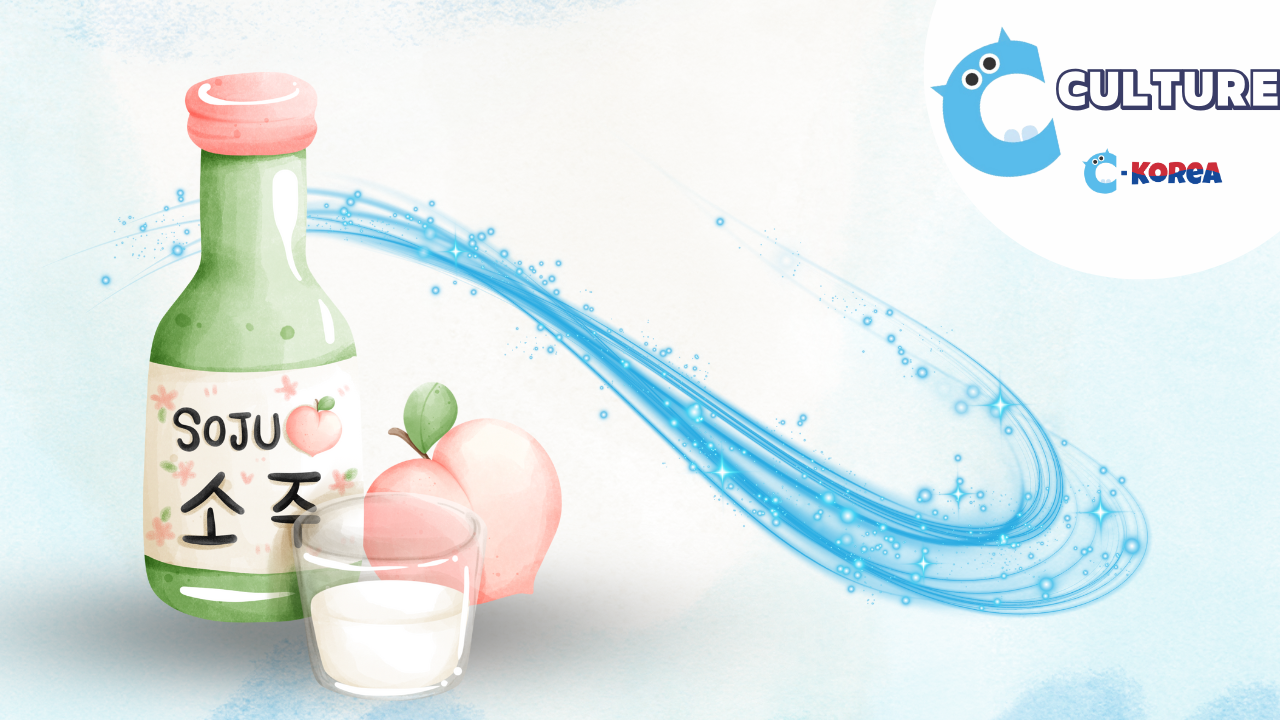The five elements of yin and yang are considered the beginning of the formation of all things and the order of the universe. They represent matter: water, fire, wood, metal and earth, and represent the balance in life. There are five traditional colors in Korea called the Five Colors: blue, red, yellow, white, black, which are considered lucky colors for Koreans. The Five Colors are colors derived from the philosophy of yin and yang and the five elements.
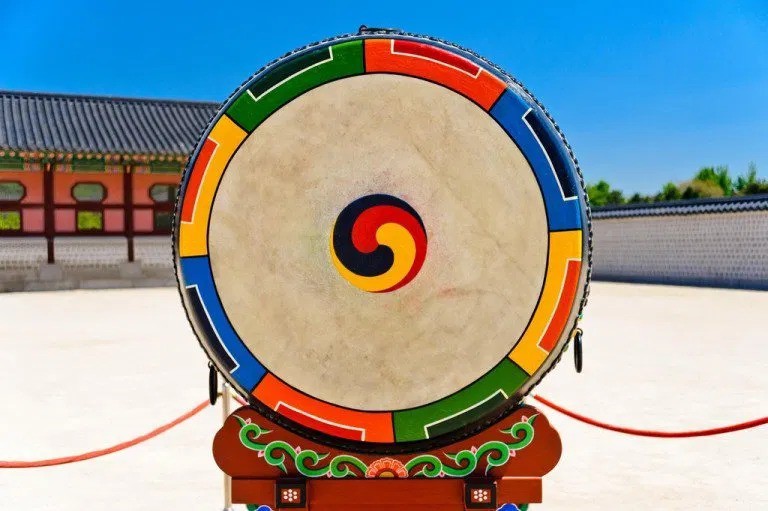
The manifestation of the philosophy of yin and yang, the five elements in the culture and life of the Korean people:
1. Represented in the national flag:
The Taegeuk flag (태극기) is a white rectangular flag with a circle of yin and yang in the middle (in Korean called Taegeuk) with red on top and blue on the bottom. The white background symbolizes the purity of the nation. The Taegeuk represents the origin of all things in the universe to keep the two principles of yin and yang in perfect balance, the negative aspect is blue, the positive aspect is red. The four corners are the four trigrams of Qian, Kun, Kan, and Li. This flag has been used by Korea since 1950.
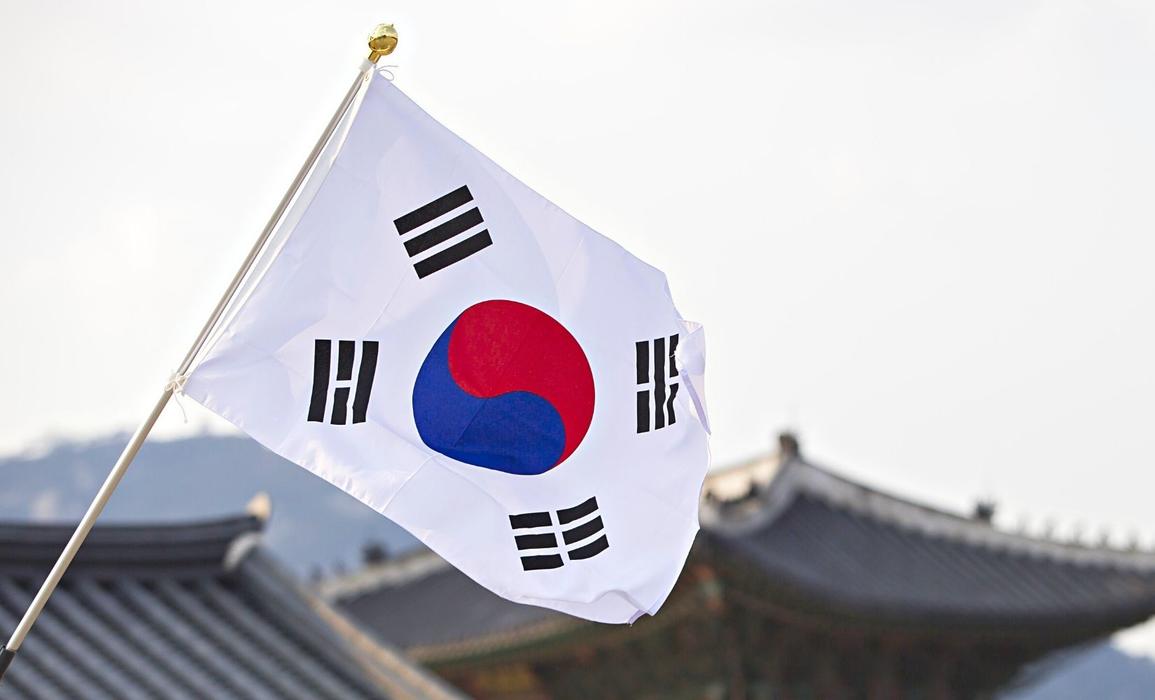
2. Represented in culinary culture:
Five fixed colors often appear in Korean dishes. They are black, red, blue, white and yellow. And according to Korean beliefs, these five colors represent the five elements. The complete combination of these colors in cuisine not only helps to harmonize yin and yang but also helps to balance all things.
Black represents water, blue represents wood, red represents fire, white represents metal and yellow represents earth. These five colors also represent east, west, south, north and center; sour, spicy, salty, sweet, bitter. According to Koreans, dishes with all five flavors as above will be more delicious and more nutritious.

– Harmonizing the Yin and Yang of the object (food): the five elements: cold, hot, warm, cool, neutral. The ingredients are combined to create balance.
– Harmonizing the Yin and Yang of the subject (human): Using food to regulate the imbalance of Yin and Yang in the body, considering food as medicine.
– Harmonizing the Yin and Yang between humans and the natural environment: Rice mixed with grains: glutinous rice, barley, red beans, black beans, millet symbolizes the Five Elements with the wish to receive the vitality of the Five Elements, so that the internal organs are balanced.
– Harmonizing the Yin and Yang between the subject and time: Koreans have a seasonal diet (24 periods).
3. Represented in traditional costumes:
The five main colors according to the Eastern philosophy of yin and yang and the five elements are applied to Hanbok. White symbolizes purity, integrity and is the most used color for Hanbok. The upper class and the aristocracy can wear costumes mixed with red, yellow, navy blue or black (on the outside of the Hanbok, covering the arms and upper body).
The patterns and motifs on Hanbok are not only visually beautiful but also contain deep meanings. Therefore, this national costume is also used to express the status and social position of the wearer. Sometimes it is also a tool to express their wishes and aspirations.
Among animal motifs, dragons, phoenixes, turtles, giraffes, etc. represent luck and good fortune. Butterfly motifs mean longevity. Bat motifs are intended to pray for fertility. These are very popular traditional animal motifs.
Tree and plant motifs are also very rich. Chrysanthemums represent longevity. Orchids represent friendship. Plum blossoms symbolize courage and virtue. Bamboo symbolizes loyalty. Lotus flowers mean purity. Grapes mean good fertility. Or peonies symbolize wealth.
4. Represented in architecture:

– In Hanok house architecture:
+ Hanok houses are built with their backs against the mountain, with water flowing beside them;
+ In Hanok house architecture, there is a full presence of 5 elements: Metal (of pans, metal utensils, etc.), Wood (Hanok is built of wood), Water (well), Fire (fire from the stove, etc.), Earth (walls built of earth);
+ In the house, there is a space for women (called “anche” also known as the inner house) and men (called sarangche, this is where the men in the family receive guests);
– Hanok has a massive roof structure symbolizing yang, while the walls of the house symbolize yin.
– In royal architecture:
+ Color: the theory of yin and yang and the five elements is clearly shown in Dancheong art, which is the art of painting and decorating patterns on wooden architectural works. There are 5 basic colors used corresponding to the five elements: red, blue, black, yellow, white;
+ Decorative motifs: often use mythical animals such as phoenix, dragon, tiger, … Each animal when used in decoration is usually a male – female pair representing the harmony of yin and yang.
+ “Dragon vein”: the capital is located in the center, surrounded by four mountains, next to which is a river flowing through. In each direction, a main gate is built, on the ceiling of each main gate is decorated with the image of a corresponding representative animal. The four main gates are the four directions.
5. Represented in cultural beliefs:

– Ancestor worship (like most ethnic groups in East Asian culture): the color of costumes and the arrangement of the ancestral altar are also arranged based on the principle of yin and yang and the five elements.
– Originating from agricultural culture, Korean people also have ceremonies and festivals associated with personal life, nature and gods: funerals (life cycle rituals), healing ceremonies, prayer ceremonies, etc. The concept of death is that after death, people will go to the underworld (death is the end of this world, and the beginning of the other world), when yin is strong, yang is weak and vice versa. Like the Vietnamese, the traditional mourning clothes of Korean people are also white. According to the Five Elements, it is the color of the Metal element (West – the direction of the setting sun/yin).
For more information about studying and working in Korea , please contact :
C-KOREA CULTURE AND STUDY ABROAD CONSULTING CO ., LTD.
- Address : 5th Floor , 94-96 Nguyen Van Thuong , Ward 25 , Binh Thanh District , Ho Chi Minh City
- Hotline: +84 28 7308 4247
- Facebook: https://www.facebook.com/profile.php?id=61565051012830
- Tiktok: https://www.tiktok.com/@duhoc_ckorea
- Youtube: https://www.youtube.com/channel/UCQspuqhQlf4IRFCDzN4ce2A





